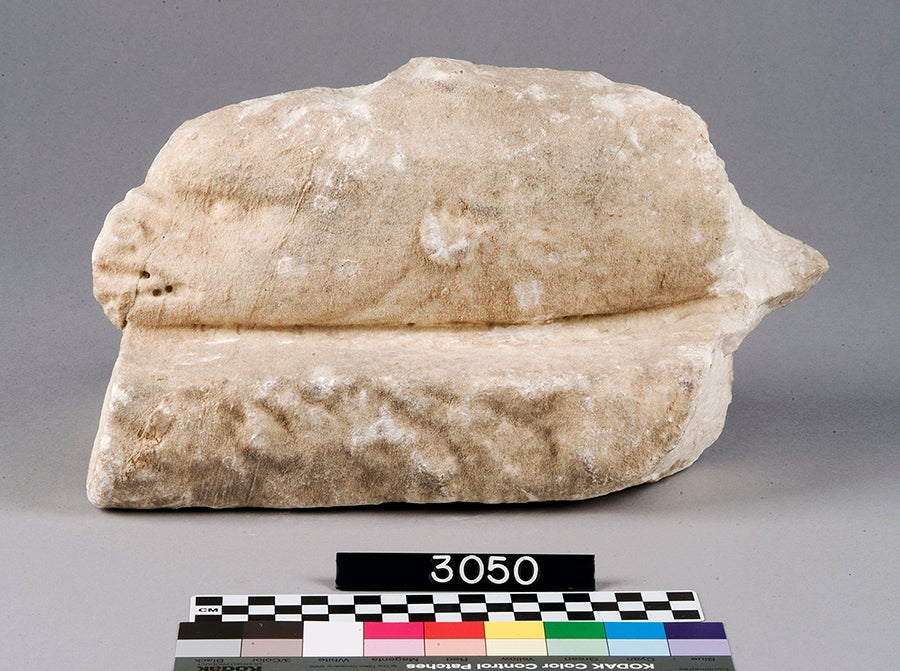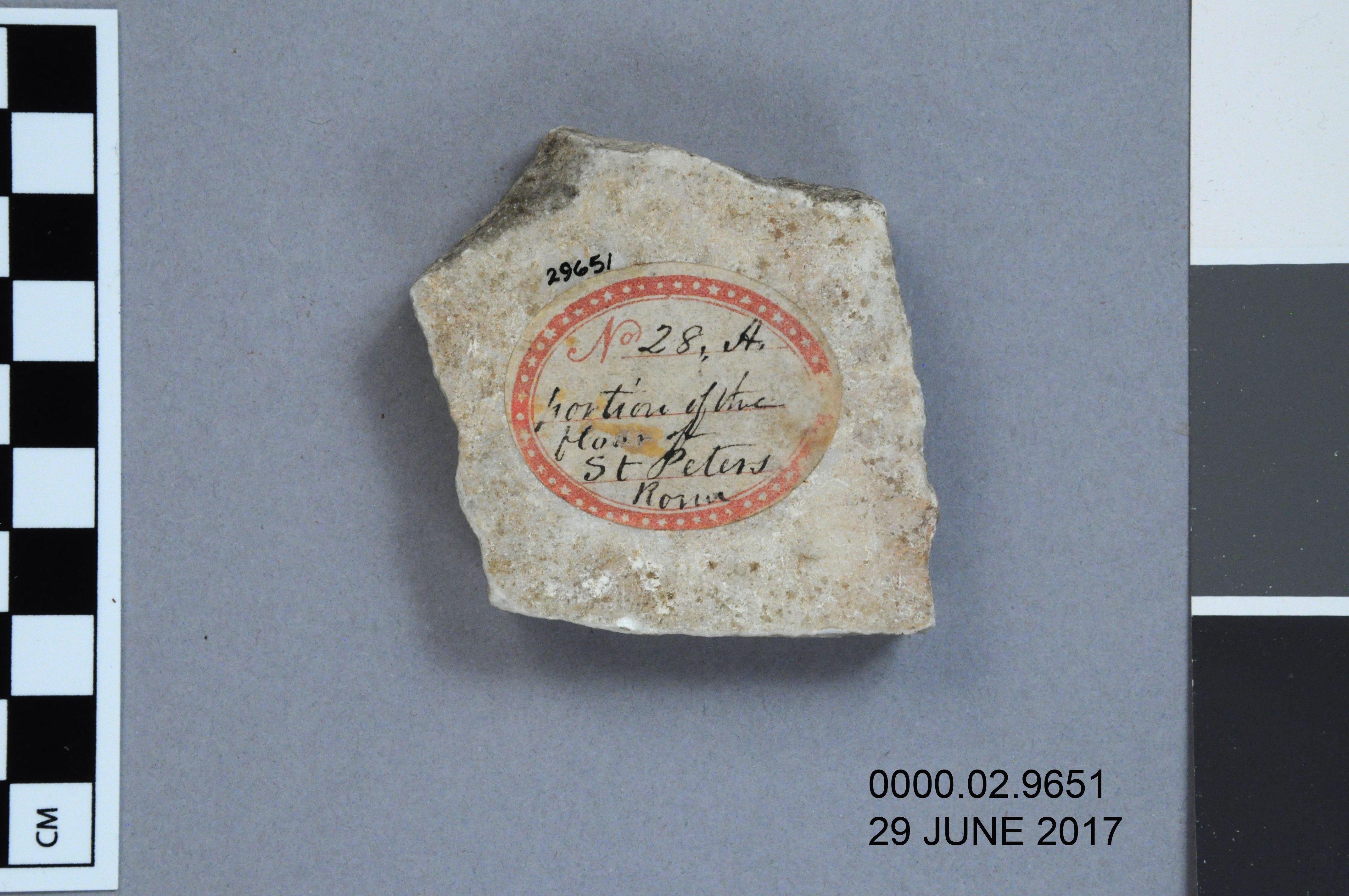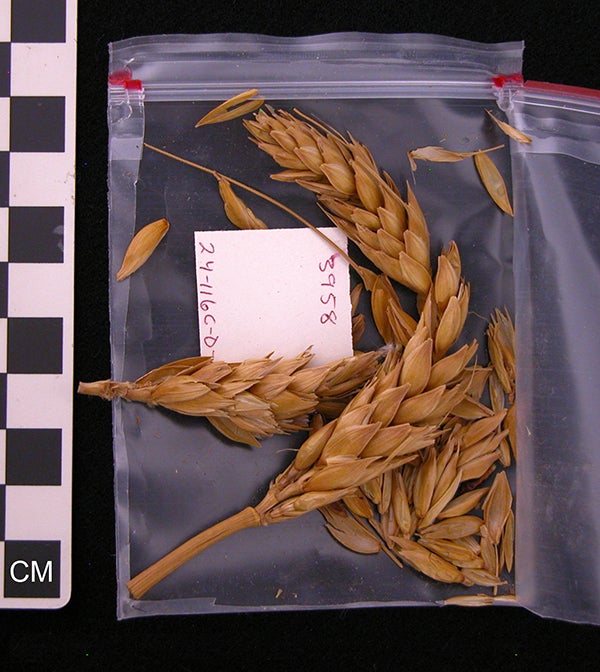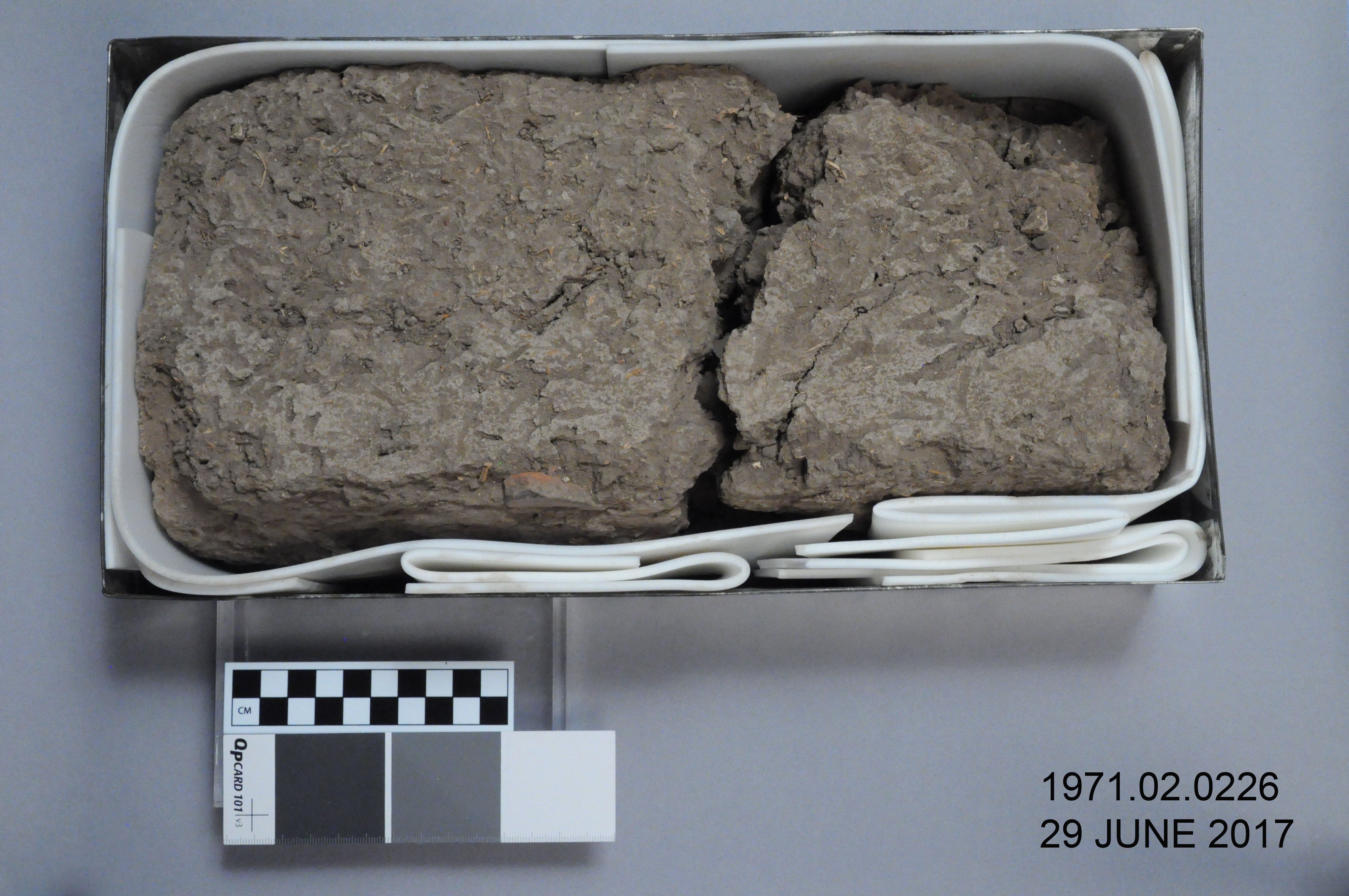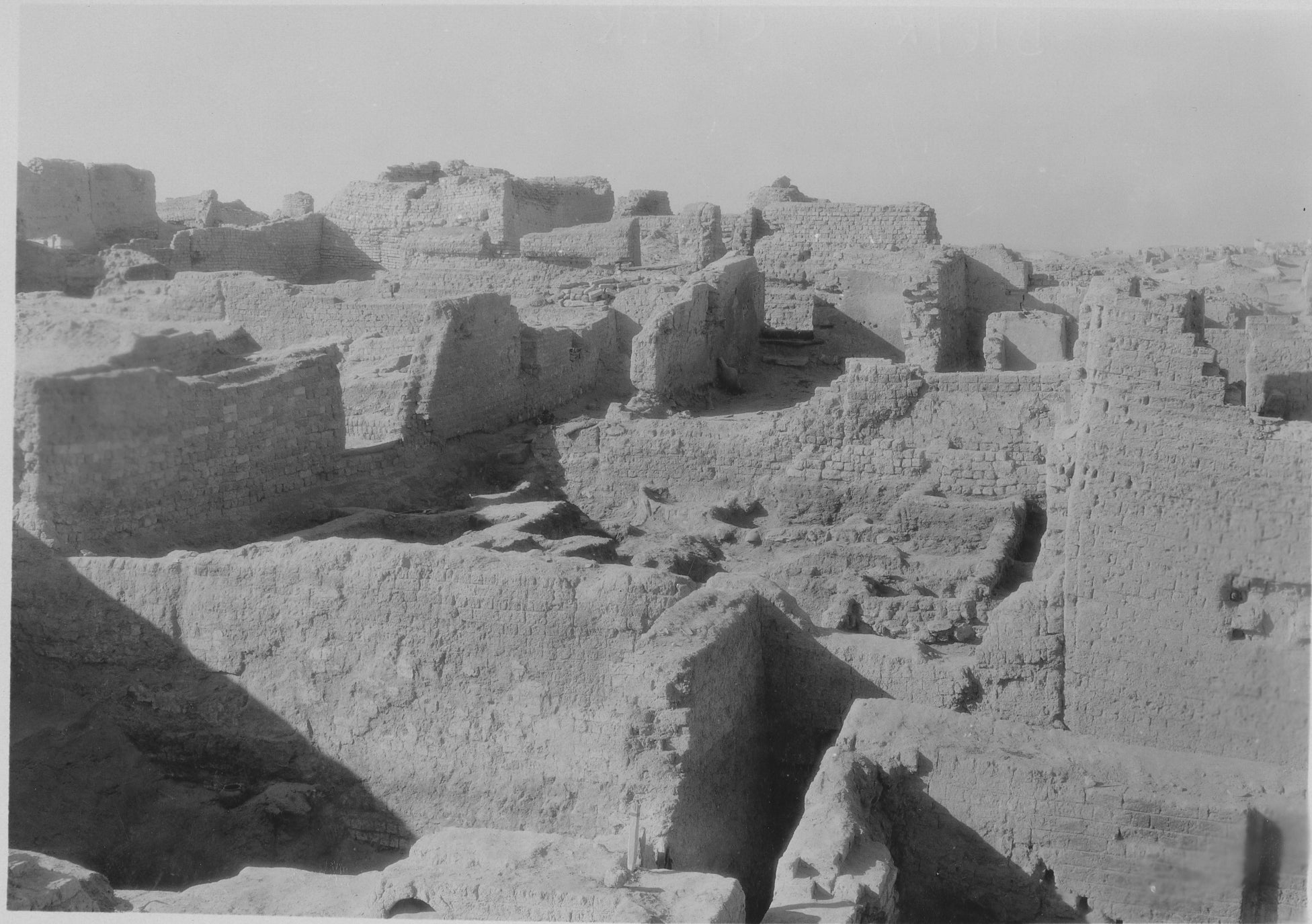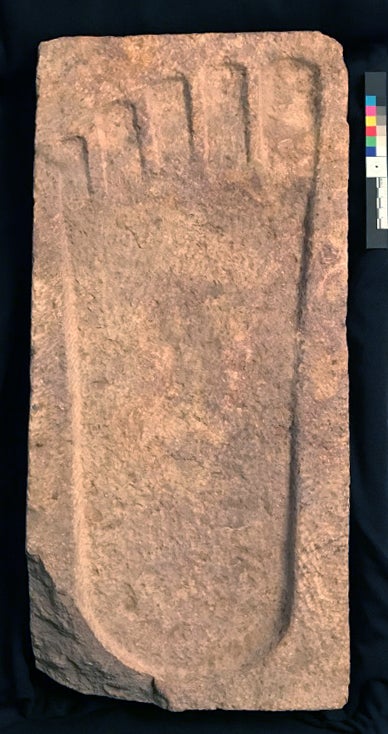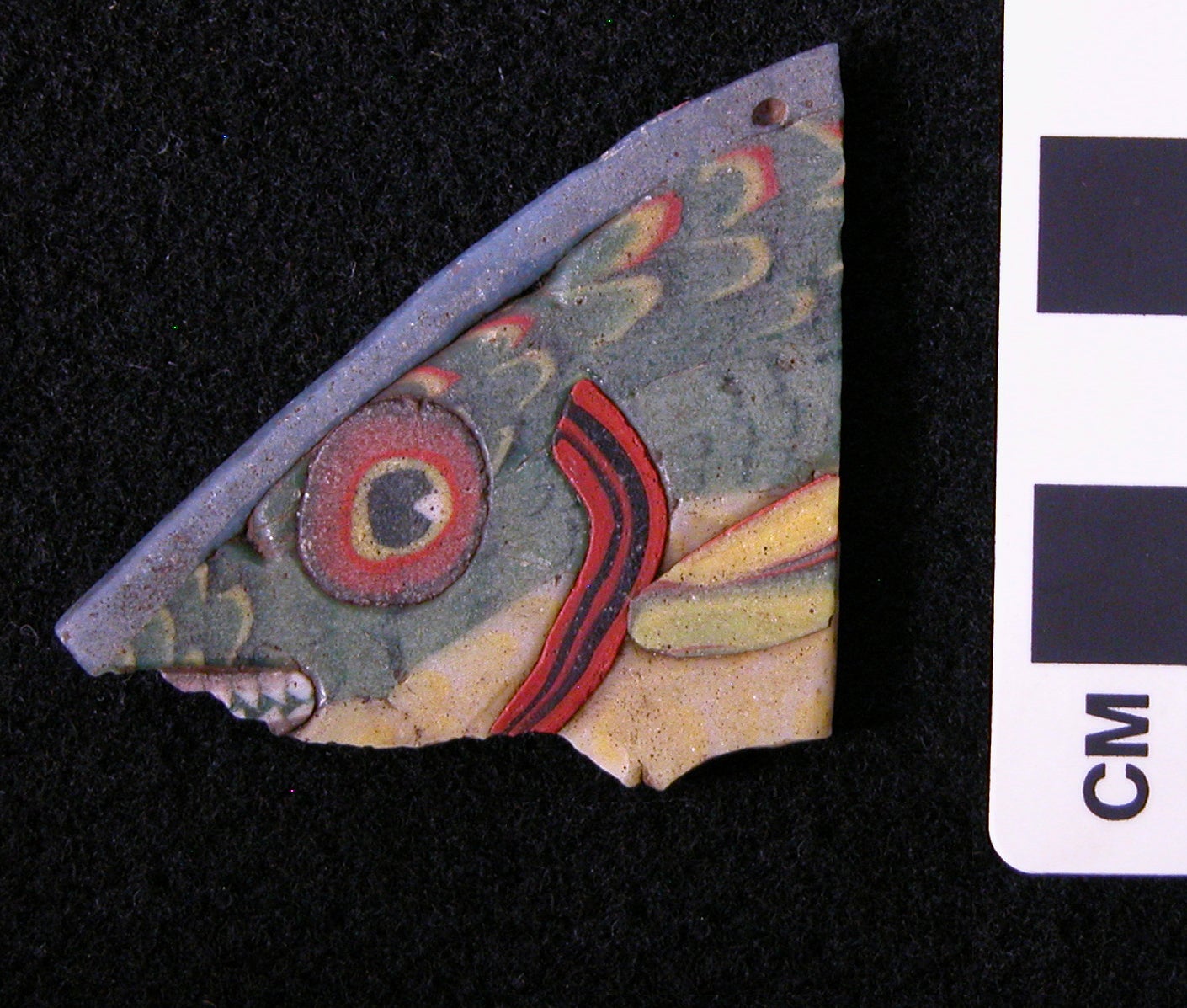Ugly Object of the Month — December 2017
BY SUZANNE DAVIS, Associate Curator of Conservation
Hello, readers. Yes, it’s the best time of the month once again, the time to set aside all worries and cares and indulge, for a few brief moments, in the blissful pleasure of contemplating a truly ugly archaeological object. In honor of this time of the year — when there are a lot bird-related references in American culture (turkey at Thanksgiving, doves and partridges around Christmas) — we have a bird-shaped object for December.
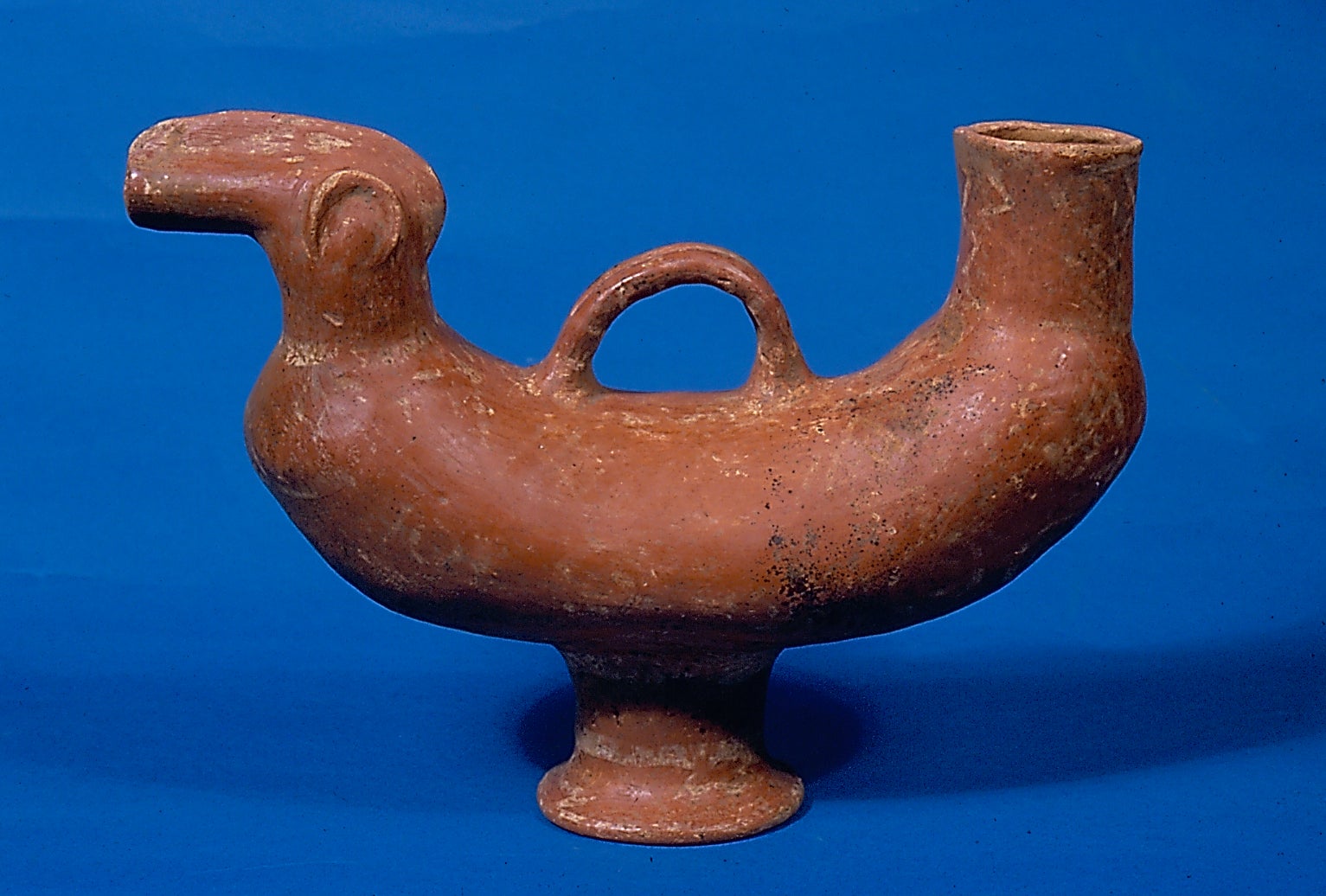
This is an askos, or — in not-Greek — a small pitcher that might have been used for wine or oil. It is, sort of, shaped like a bird. I think it is supposed to be shaped like a bird, at any rate. Although … the head also sort of looks like a sheep head to me…. To be fair, I would be pretty excited if I were working on an excavation and we found a cool animal-shaped vessel like this. But like many archaeological objects, this one has had a hard time. Leaving aside the weird head shape, it’s missing a lot of its original painted decoration, there are some old breaks, and we also have some splotchy mildew staining.
To make things extra special for you, the image I’ve chosen is an old one from our archives. You just don’t see this kind of color combination in archaeological object photography anymore, sadly. Now it’s all about correct color registration and “picking up the mid-tones.” In contrast, this images says to me, “I’m ancient, sure, but baby, I’ve still got it.” Come see this colorful character for yourself — it’s on view in the Kelsey’s first-floor Etruscan case.
Ugly Object of the Month — December 2017 Read More »

